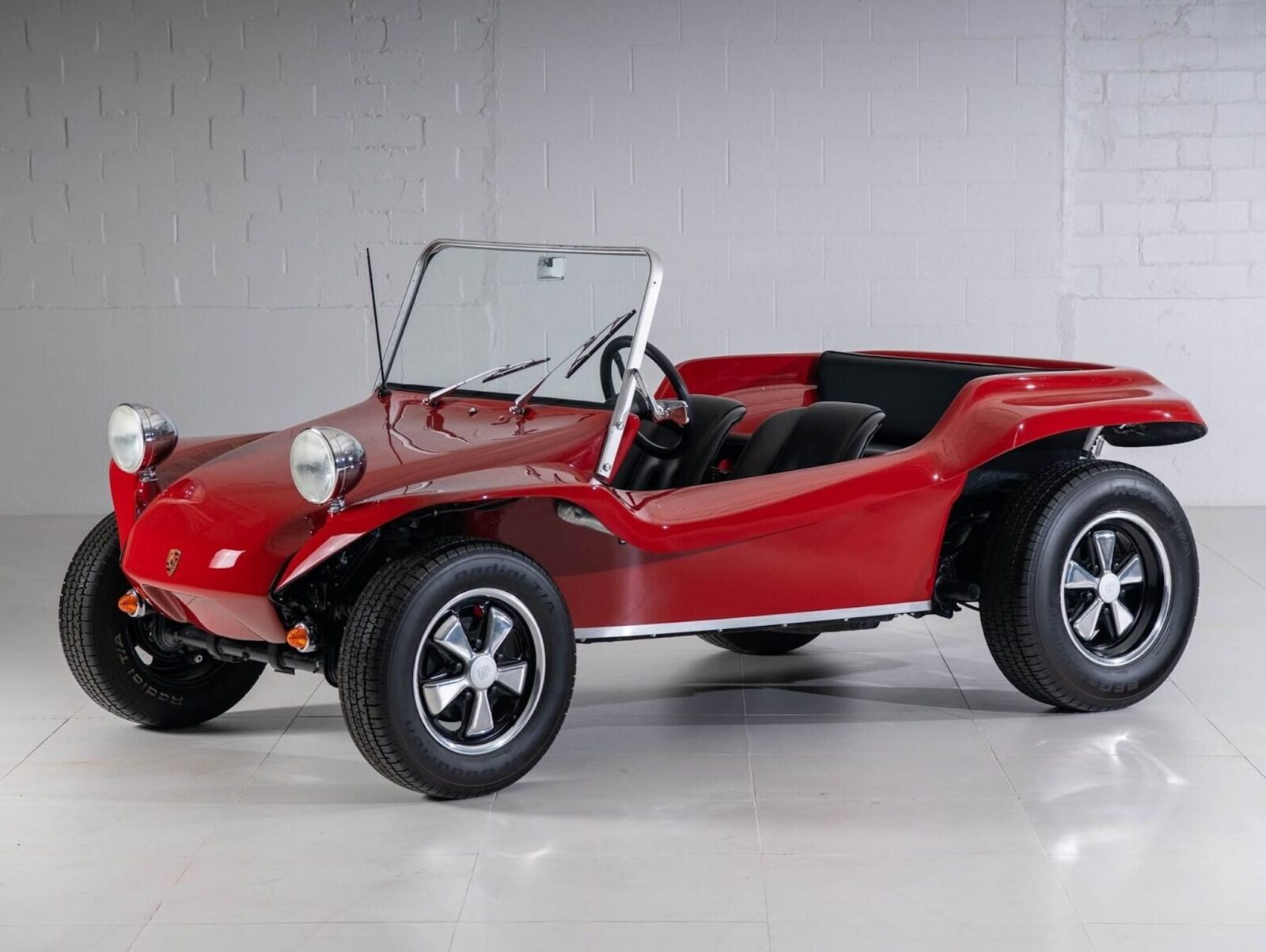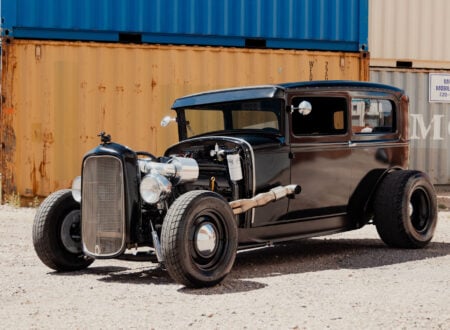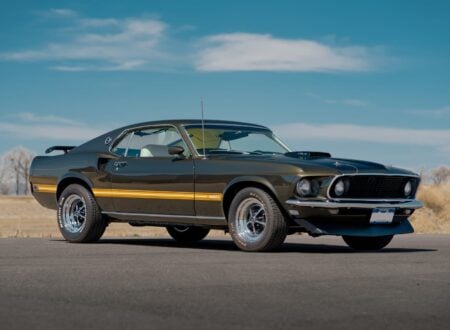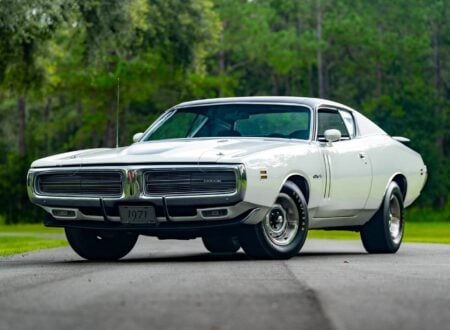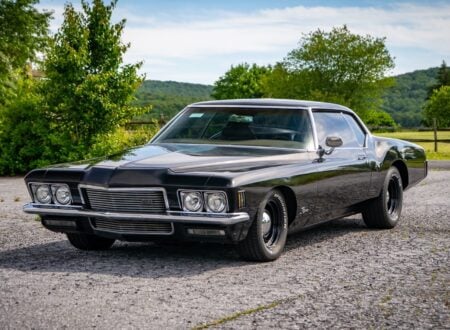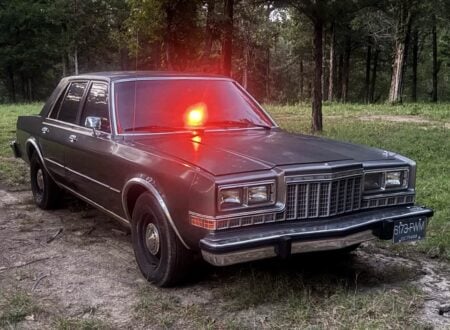This 1968 Kellison Sandpiper Roadster was built by well-known Porsche restorer Tim Goodrich. He fitted it with an enlarged Porsche 912 engine and a number of other Porsche design touches including VDO instruments, Fuchs wheels, and Porsche badging.
The Sandpiper was a dune buggy design closely based on the Meyers Manx, it was built by Kellison and at one point the company is said to have become the largest manufacturer of dune buggy bodies in the world.
Fast Facts – A Porsche-Powered Kellison Sandpiper
- The Kellison Engineering & Manufacturing Co. was founded by Jim Kellison in 1957. Jim was working at Travis Air Force base as a civilian employee at the time and he had long been a fan of sports cars. He developed his first car in his garage using wire mesh and plaster to build up a fiberglass mould he could use for production versions of the design.
- By the standards of the 1950s when they debuted, the Kellison J-series cars were well ahead of their time. They looks faster and sleeker than almost anything else on the road, and once fitted to a suitable chassis with a competitive drivetrain the cars could (and frequently did) beat Ferraris, Jaguars, Corvettes, and whatever else was thrown at them.
- By the 1960s Kellison began to diversify, soon the product line included Formula V cars, boats, dune buggies, hot tubs, and more. At one point in the 1960s Kellison was the largest manufacturer of dune buggy bodies in the world.
- The car you see in this article is a 1968 Kellison Sandpiper dune buggy. It was built by well-known Porsche restorer Tim Goodrich to a very high level, it’s powered by a Porsche 912 engine, it rides on Fuchs wheels, it has VDO instrumentation, and Porsche badging.
The Kellison Sandpiper
The Kellison Sandpiper series of dune buggies was released in the 1960s, the design was closely based on the Meyers Manx which was the first of the fiberglass dune buggy designs, created by the late great Bruce Meyers.
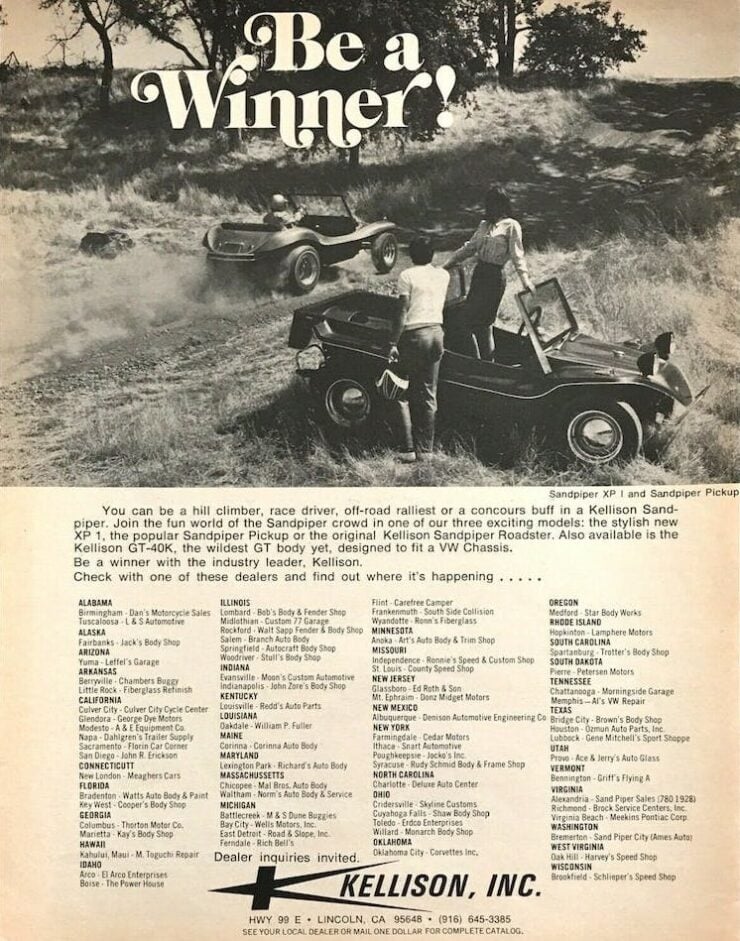

The design of the Kellison dune buggy was so close to the Meyers Manx that, understandably, Meyers filed suit for intellectual property infringement. The legal battle was drawn out between Kellison and Meyers but in the end, Kellison would win with the judge controversially deciding that the design wasn’t patentable.
Due to the fact that the Kellison Engineering & Manufacturing Co. had already been in business building fiberglass car bodies and kit cars since the 1950s they had a nationwide dealer network already in place, and so it wasn’t long before their dune buggy designs were the best-sellers in the category.
Kellison would offer three primary dune buggy variants, the first was the Kellison Sandpiper Roadster, the second was the Kellison XP-1, and the third was the Sandpiper Pickup which had seating for two and a small pickup truck-style cargo area in the rear.
These three buggy designs all used a shortened VW Beetle floorpan as their base, and they kept the original Beetle flat-four engine in place, along with the 4-speed manual transmission.
In the 1960s, and for many of the decades that followed, Beetles could be bought secondhand for very little money. This fact, coupled with the fact that Beetles had independent front and rear suspension and a bulletproof drivetrain made them ideal for dune buggy use – the original Meyers Manx would prove this by winning the inaugural 1967 Mexican 1000 race (the predecessor of the Baja 1000).
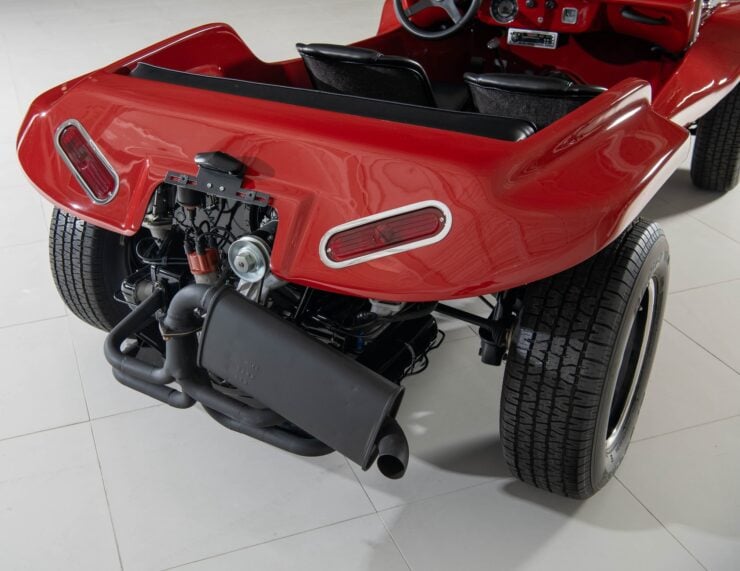

Thanks to the fiberglass construction many Kellison bodies have survived to the modern day and as interest in classic 1960s dune buggies continues to climb more and more of them are being rediscovered and restored.
The Porsche-Powered Kellison Sandpiper Shown Here
The car you see here is hands-down the most unusual Kellison Sandpiper we’ve ever seen, and it’s one of very few powered by a Porsche 912 flat-four rather than the similar VW Beetle unit.
The 912 engine was the Type 616/36 which was closely based on the earlier Type 616/16 engine from the Type 356SC. Originally it had a displacement of 1.6 liters however the engine used in the Kellison Sandpiper in this article has had its displacement increased to 1.8 liters in order to boost power with no impact on reliability.
The car was painstakingly built by Porsche specialist Tim Goodrich who was one of the most highly-respected restorers of classic Porsche 356s in the country before his passing in 2018.
Goodrich had started out working as a “lot boy” at a Porsche dealership in the 1960s, he would then open his own independent VW and Porsche workshop in the 1970s, and eventually he would shift his focus to the exact restoration of Porsches. His restorations were so good and so precise that he won dozens of top flight awards over the course of his life, and cars that he restored are still worth a premium.
His attention to detail is showcased on the Sandpiper shown here, not only does it have the Porsche 912 engine in the back but it also has classic Porsche-style VDO instruments, Fuchs wheels with Porsche center-caps, Porsche badging, Speedster seats upholstered in black leatherette, and a custom red-orange paint color that is reminiscent of Porsche’s vintage Signal Red.
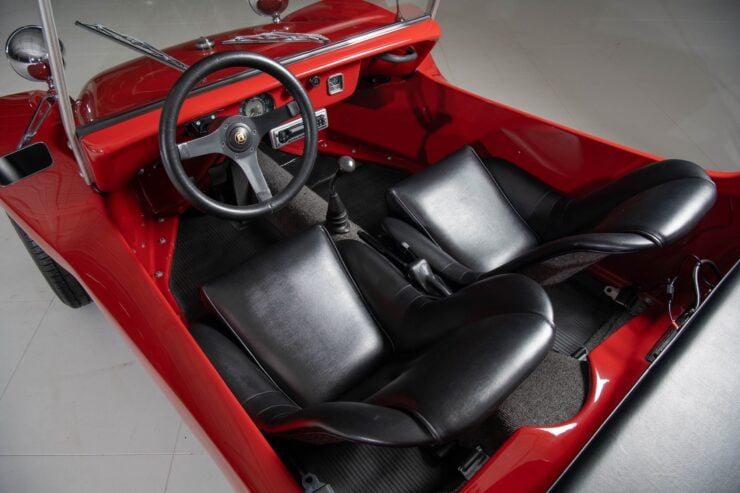

This car is now due to cross the auction block with RM Sotheby’s in early December as part of the White Collection. It’s being offered without a reserve and no price guide, it would be an exceedingly difficult car to find a price estimate for due to the fact it’s such a one-off build.
If you’d like to read more about it or register to bid you can visit the listing here.
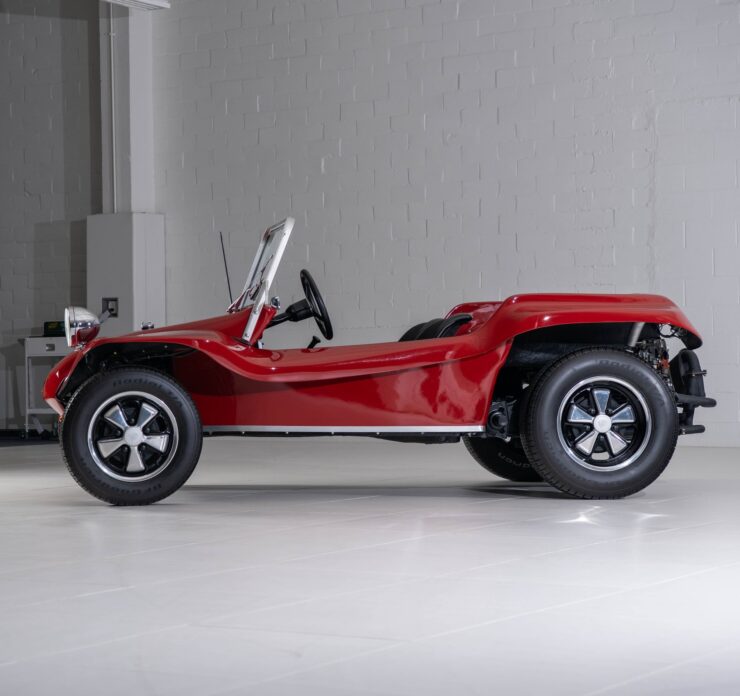
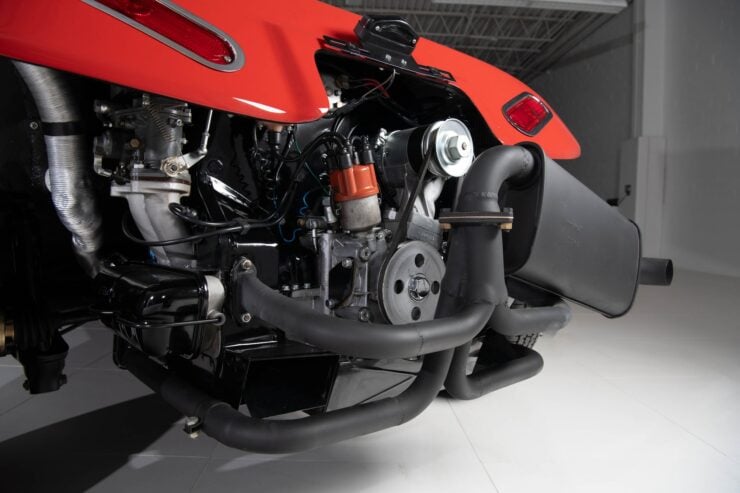
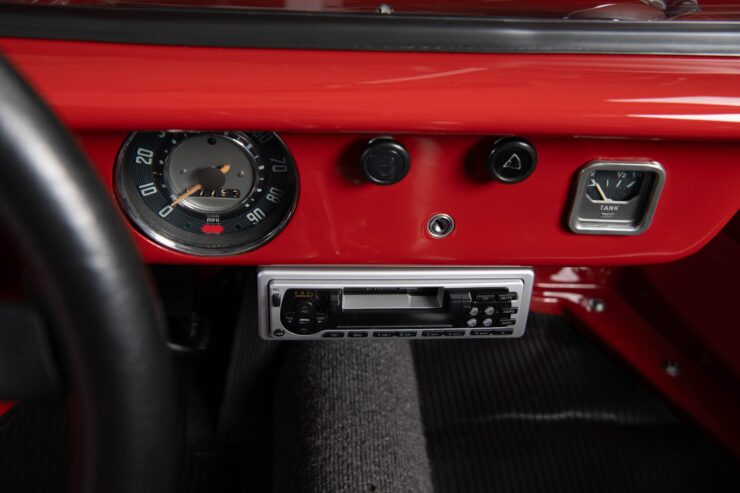
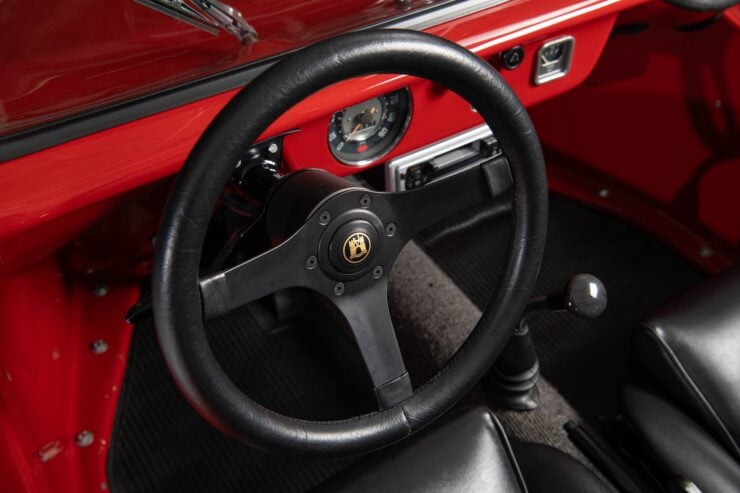
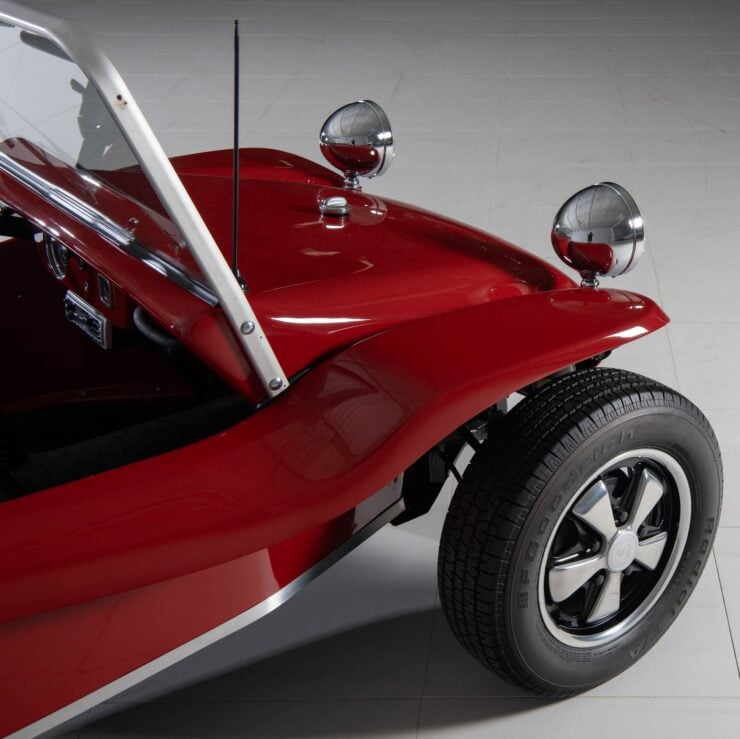
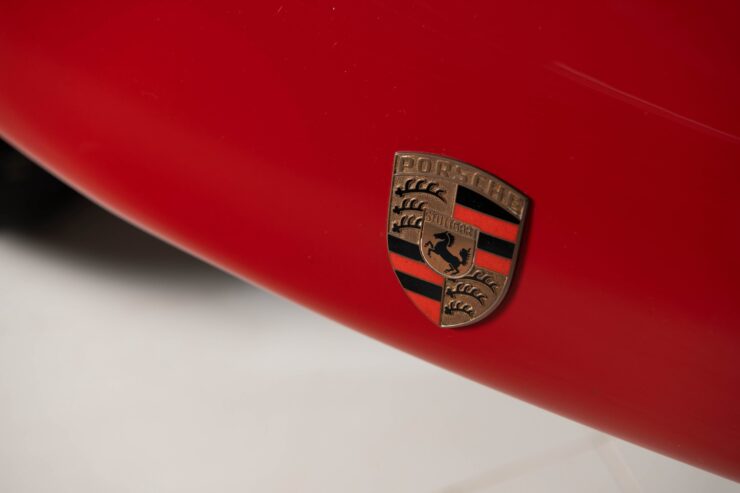
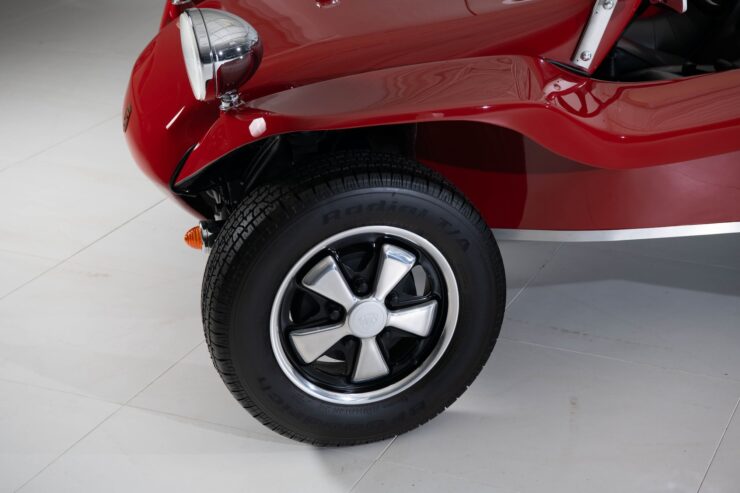
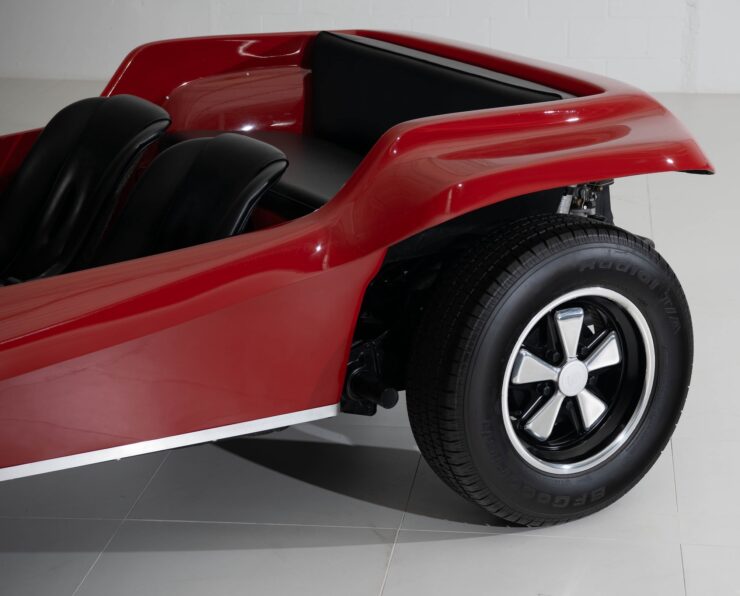
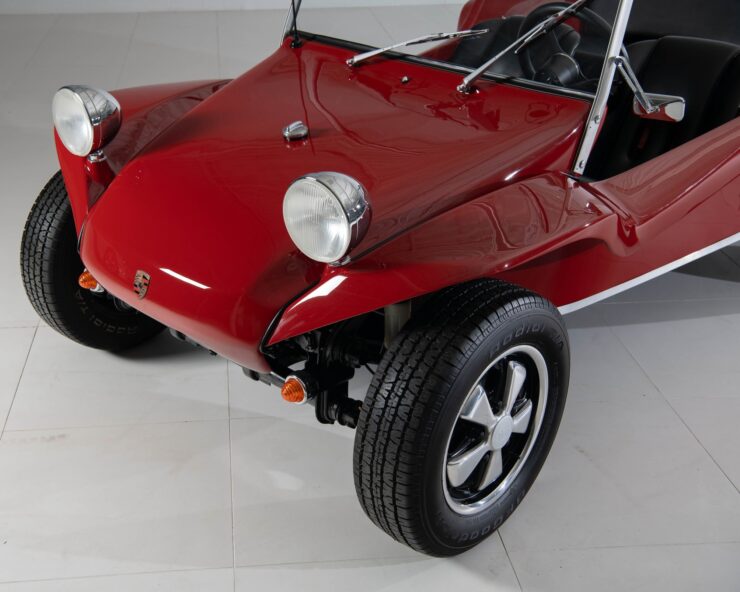
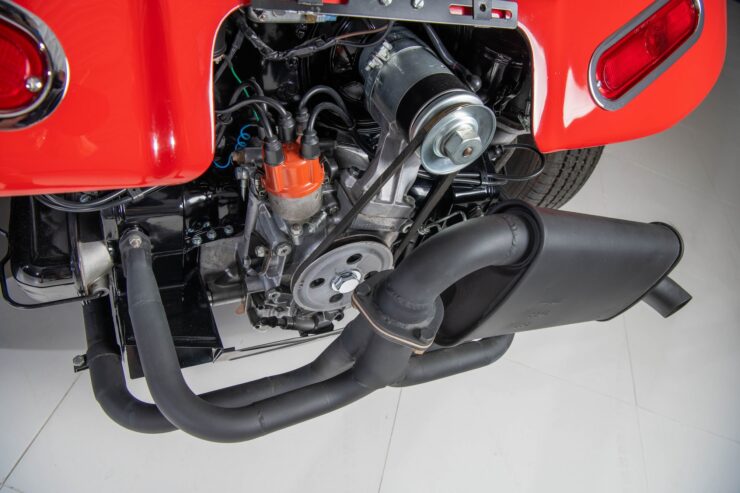
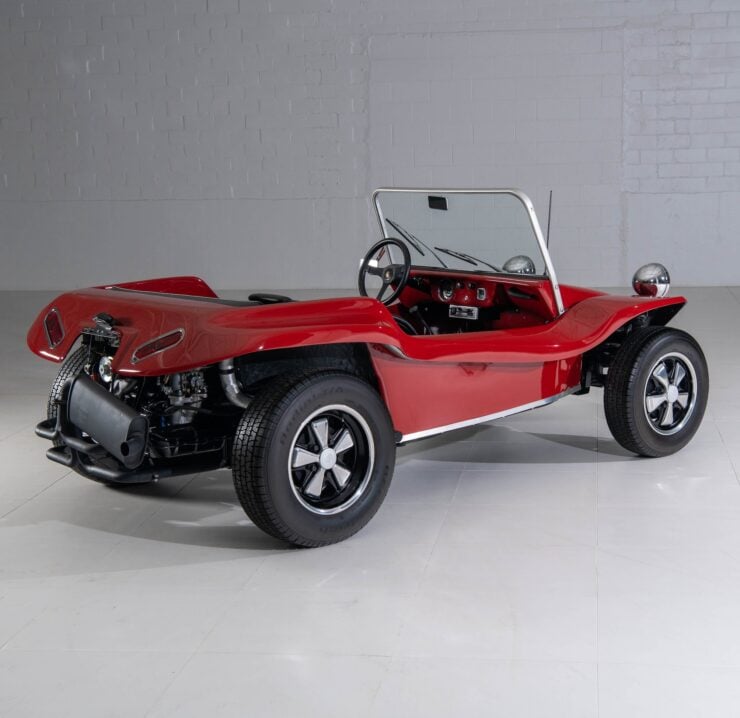
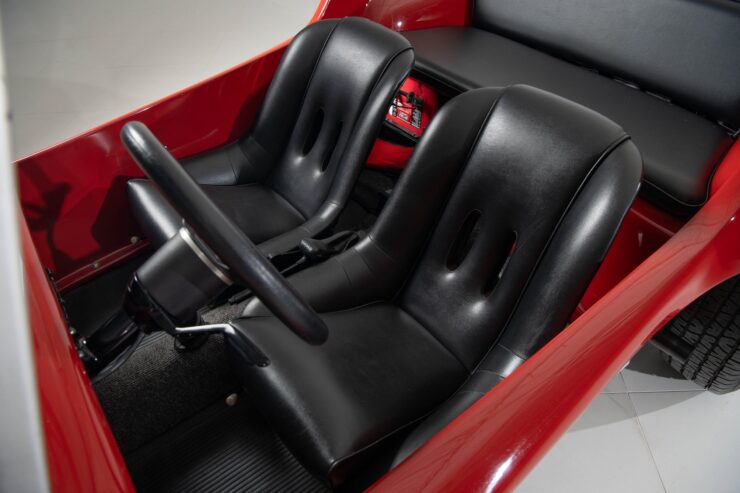
Images: Darin Schnabel ©2023 Courtesy of RM Sotheby’s

